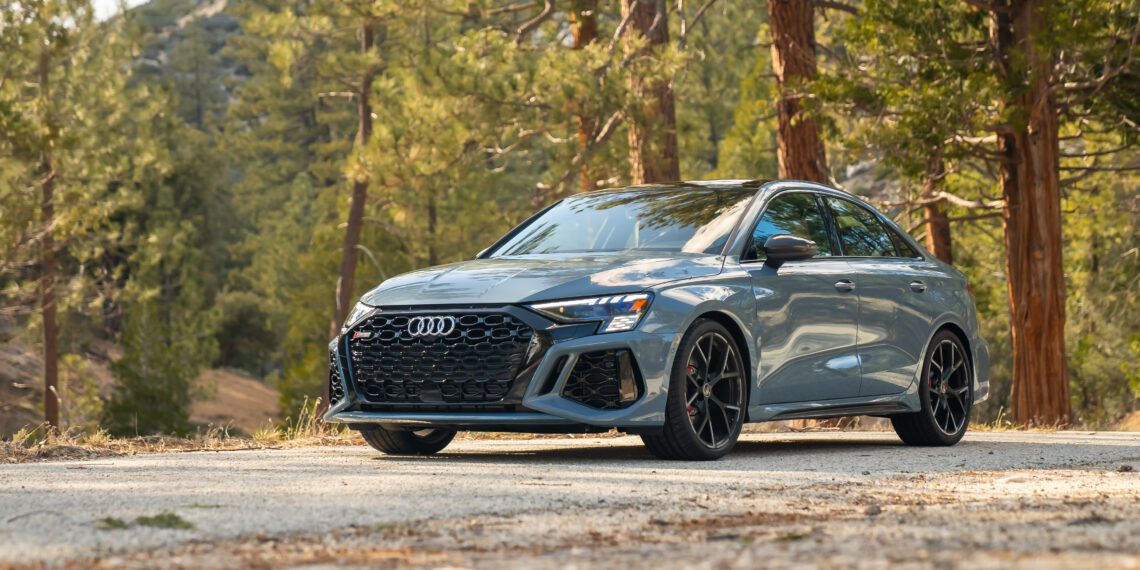Audi’s RS division is objectively killing it at the moment. The famed performance brand is consistently pumping out excellent products, be it the overachieving bargain that is the RS Q8 or the thrilling and versatile RS 6. It’s even gone so far as to update existing models by introducing Competition packages and Performance models that essentially fix any known flaws or limitations. The result is a lineup that’s one of the strongest the brand has offered in recent memory.
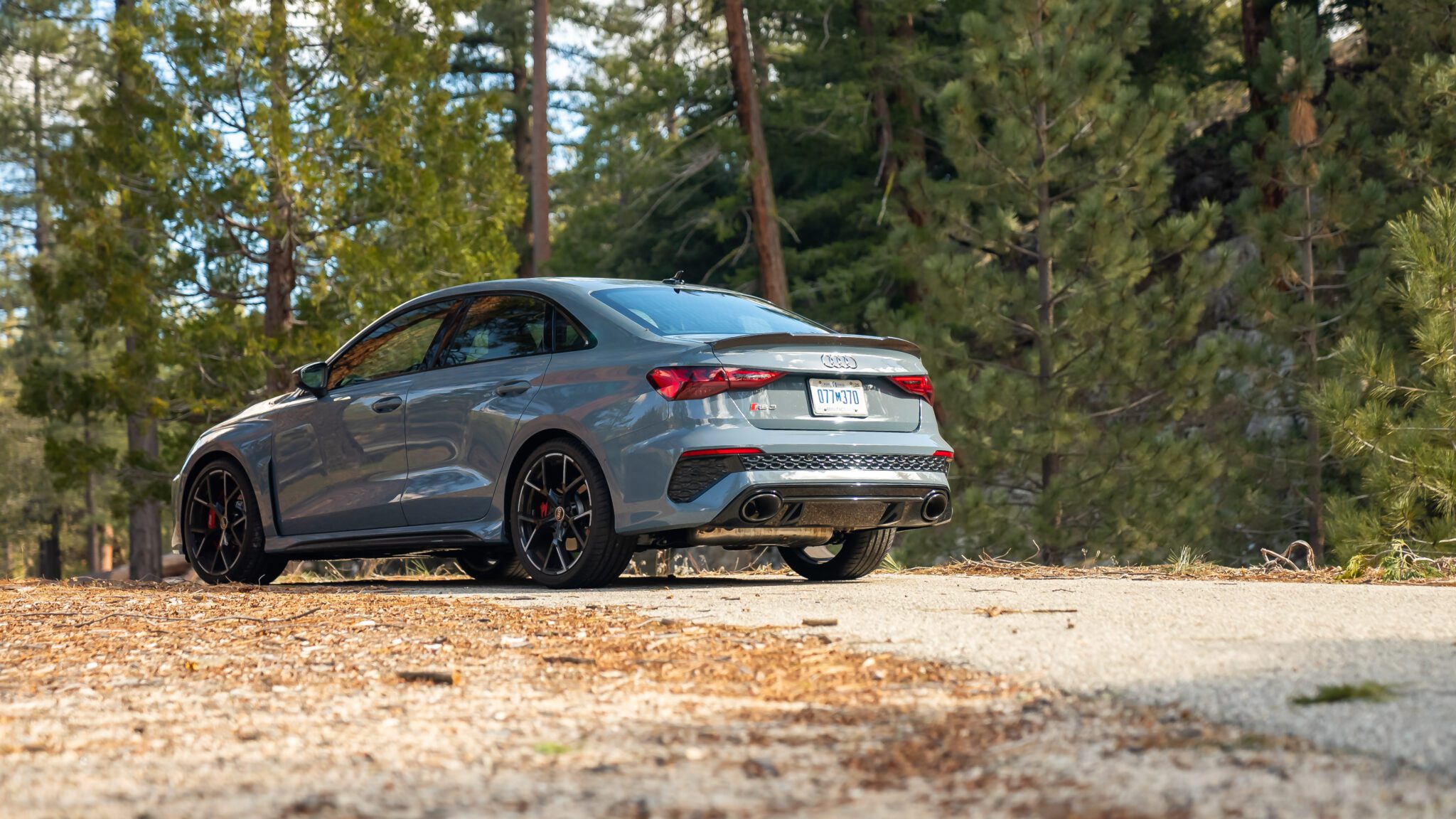
Exist alongside this band of overperformers, though, and it becomes easy to get lost in the mix, for the spotlight to only occasionally shine your way. That seems to be the case with the tiny but mighty Audi RS 3.
Even living in Los Angeles, with its unusual mix of congested city streets and hundreds of miles of twisting canyon roads, seeing Audi’s entry-level RS remains a rarity. Yet, every time I drive one, I’m left feeling that it’s a special machine. Be it the sound of its turbo inline-five, the sports car-fighting grip of its chassis, or its sheer versatility and curb appeal, it’s clear that overlooking the RS 3 is setting yourself up to miss out.
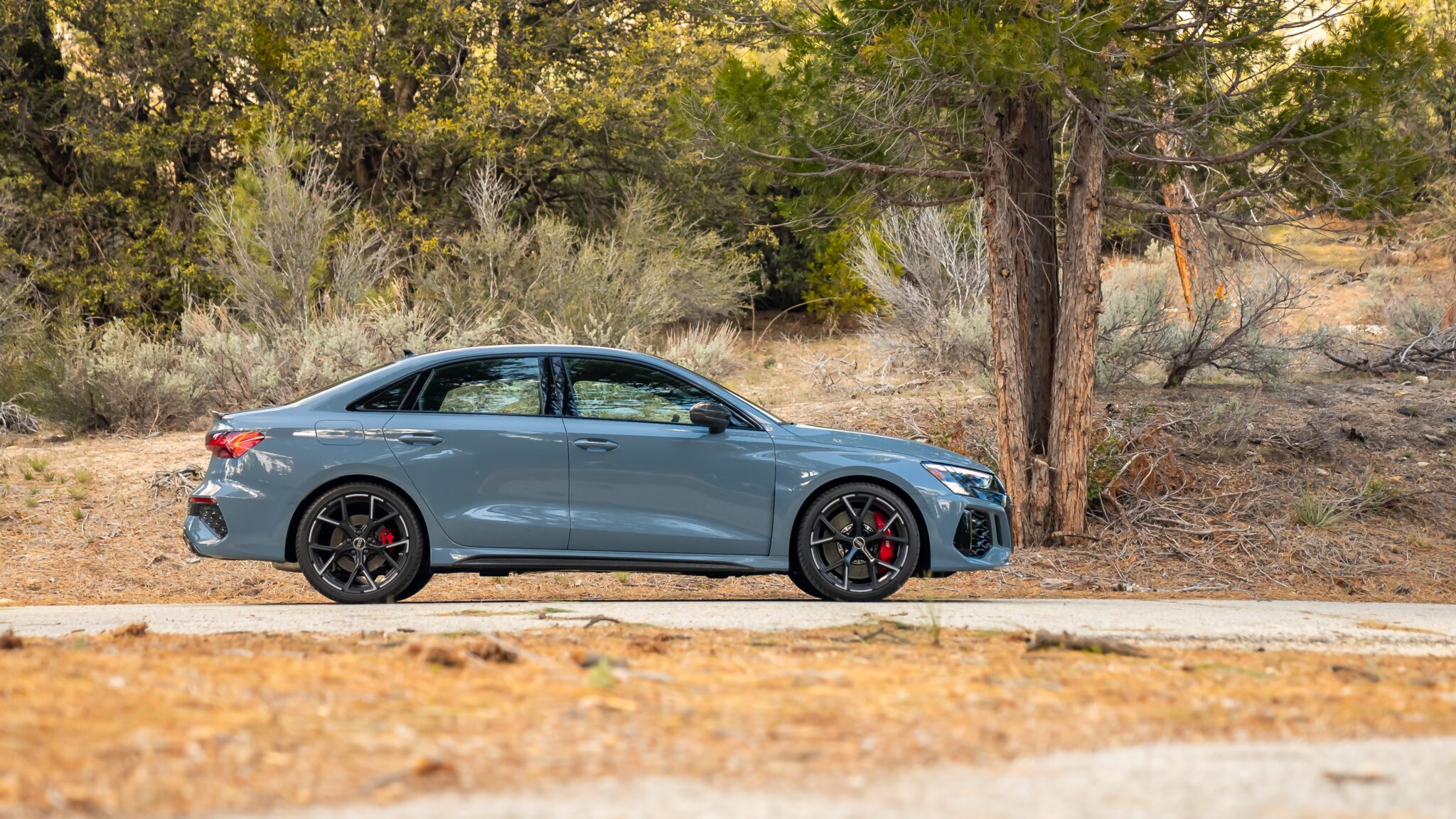
The Audi RS 3 counts on a formula that’s become synonymous with the brand that built it. It rides on a modified version of VW Group’s MQB Evo platform, shared with the standard A3 and the eighth-generation Golf. However, it benefits from a wider front track, beefed-up bodywork, enlarged air intakes, and a bespoke quattro system. Although it’ll still send most of its power to the front axle, it incorporates a new RS torque splitter, allowing it to send up to 50 percent of the available torque to the rear axle. It can then split that torque even further, sending up to 100 percent of it to a single wheel.
Powering the least expensive RS is one of the rarest engines still on sale in the US, a turbocharged 2.5-liter inline-five that develops 401 horsepower and 369 pound-feet of torque. That’s enough to propel this 3,649-pound sedan to 60 mph in 3.6 seconds before continuing onto a 180 mph top speed. It achieves these stats thanks in part to its quick-shifting seven-speed dual-clutch transmission, which sends power to all four wheels via that aforementioned quattro system, making contact with the road via Bridgestone Potenza Sport rubber.
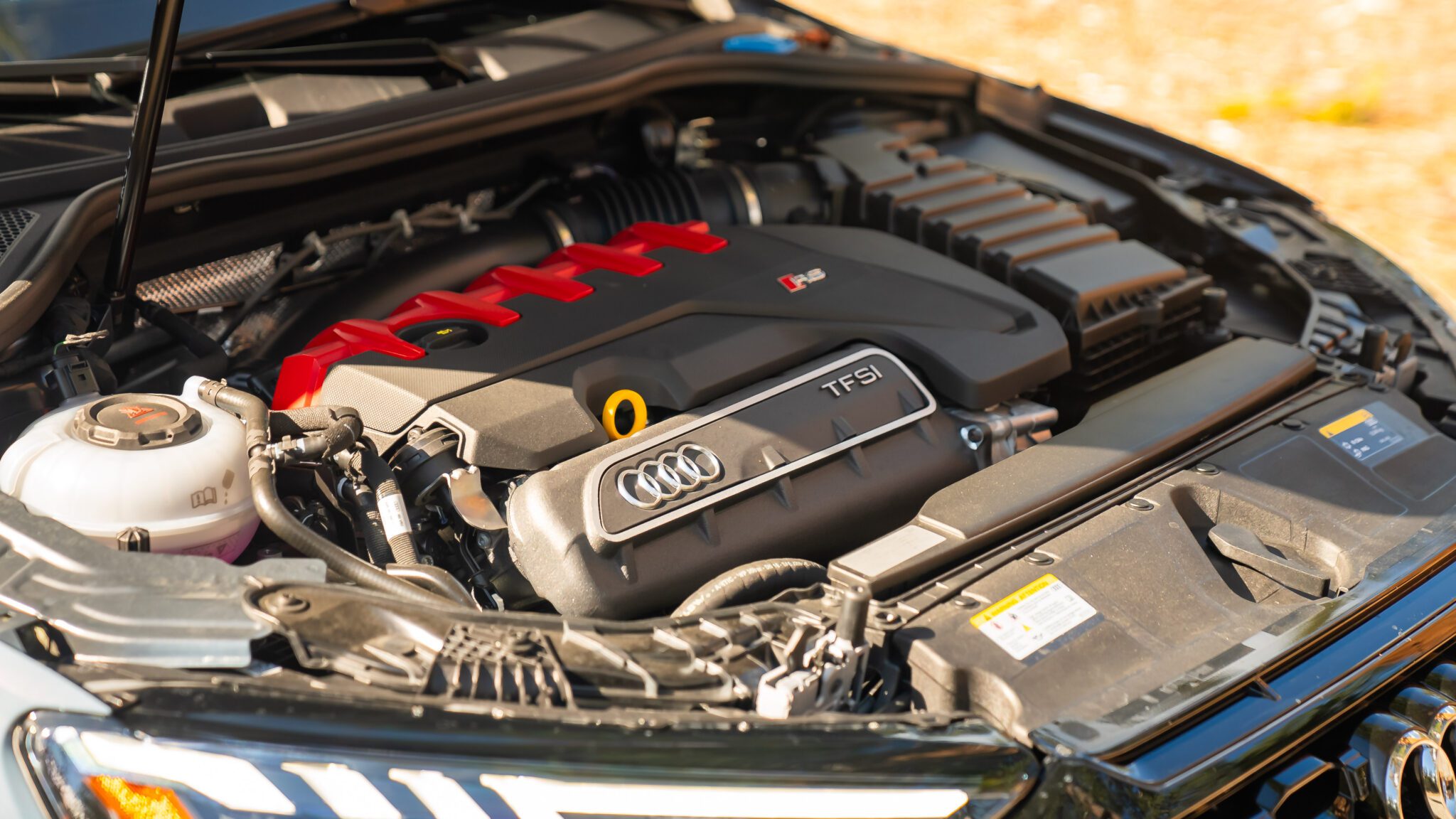
I know reading through a regurgitated spec sheet isn’t particularly exciting. Still, I list these at the top of the page because to understand how these components come together to make the RS 3 such a special machine, you first have to know how much attention to detail went into its development. It isn’t just a brawnier S3 or an upmarket Golf R; it’s more akin to a downsized RS 6 or 7, and you can feel that from the moment you set off in it.
Settle into its bolstered leather seats adorned with a hexagonal stitch pattern finished in bright red, and you’ll be met with a surprisingly spacious cabin. Although technically the smallest RS model, it offers ample head, shoulder, and leg room while leaving plenty of space for the second row. As such, it’s a small car that doesn’t feel like one, offering comparable space to Audi’s aforementioned flagships. It’s a feat made possible by its simplified center console and minimal dashboard layout that adds to this airy feel.
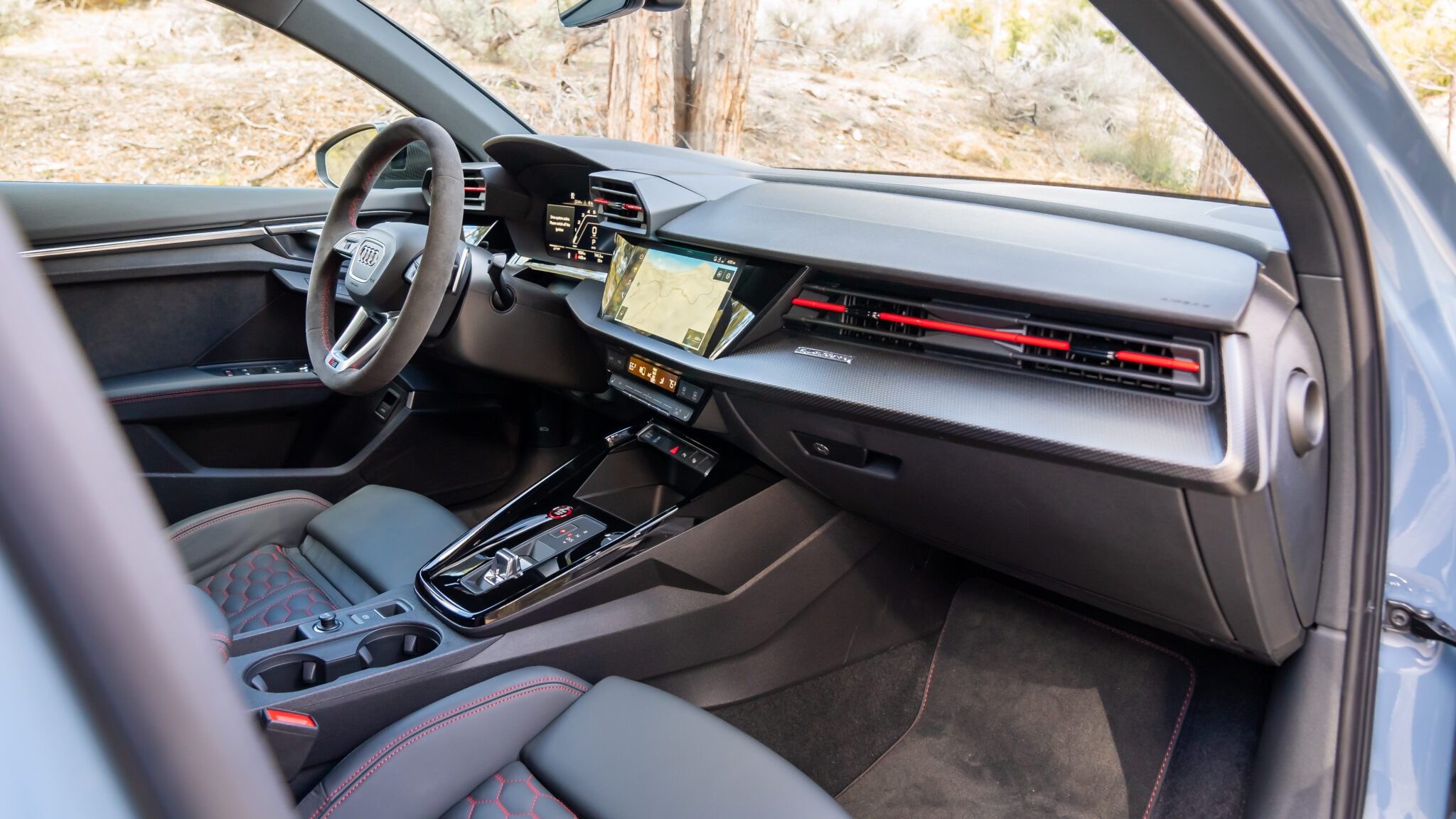
This tester sports an Alcantara-trimmed steering wheel as part of its $700 RS Design package, an extra I’d think twice about considering how frequently a car like this will be used and the material’s accelerated wear. Look through other interior highlights, such as its 12.3-inch digital instrument cluster, angled central infotainment screen, and reduced physical button offering, and you’ll yet again be reminded of Audi’s pricier products. Besides the obvious footprint difference and some added trim bits, riding in the RS 3 versus an RS 6 or 7 isn’t as different an experience as you might expect.
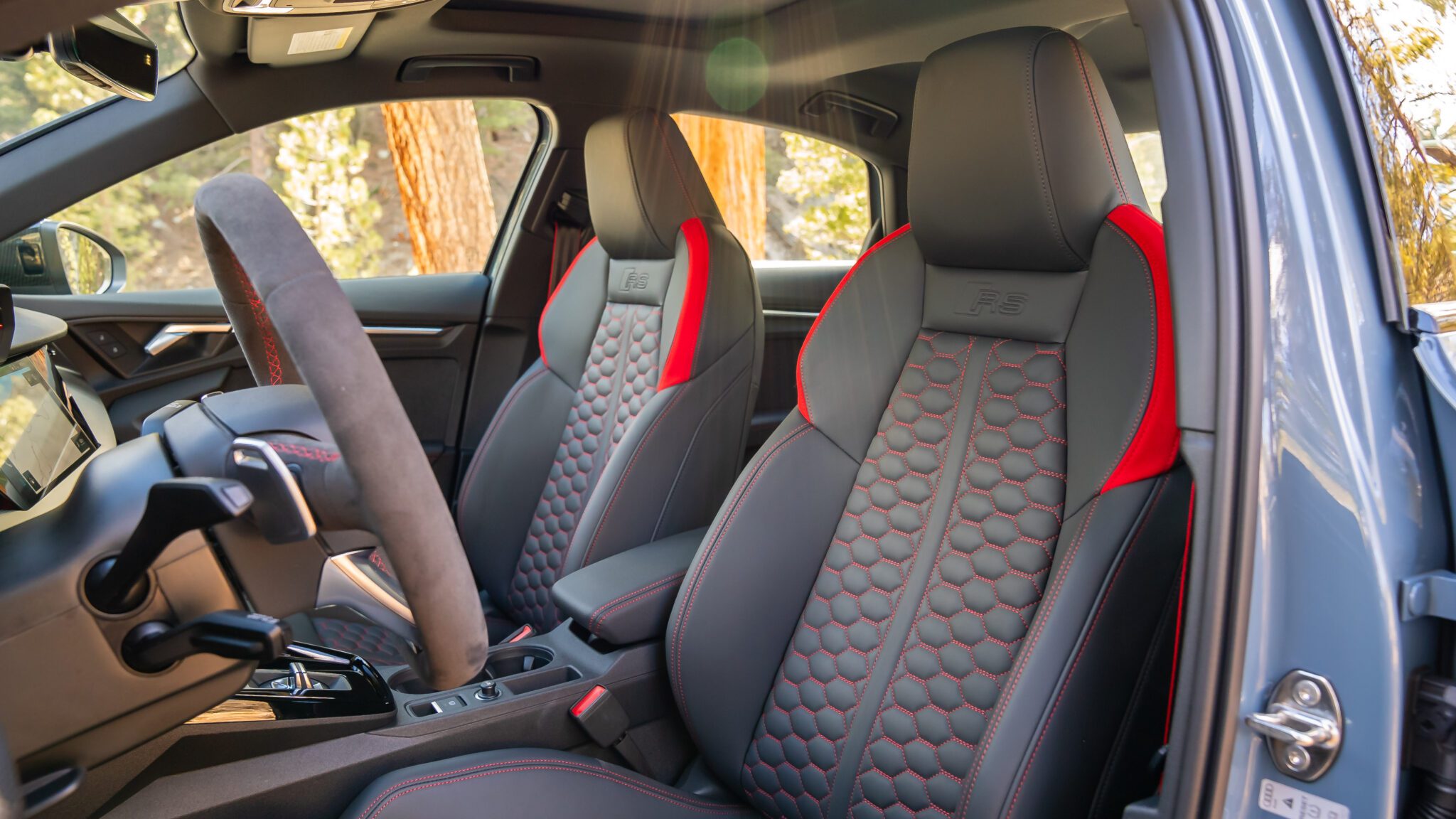
Point its nose towards a twisty road, however, and the Audi RS 3 will reward you as you pick up the pace. Get its tires up to the proper temp, and you won’t be met with the understeer that’s common in both the lesser-priced S3 and its Golf-derived siblings. With its trick rear differential routing power and maximizing the available grip, this little sedan moves through tight bends like a downsized Nissan GT-R. It’s grippy, and despite weighing 3,649 lb, it’s agile too.
In typical Audi fashion, its five-cylinder lump is a low-end torque monster. It hits you with a burst of power as you jump off the line or shoot out of a tight bend with plenty left over to capitalize on the straights in between. Thanks to how quickly its dual-clutch auto moves through gears, the RS 3 feels even quicker than its on-paper stats suggest, delivering true sports car rivaling performance.
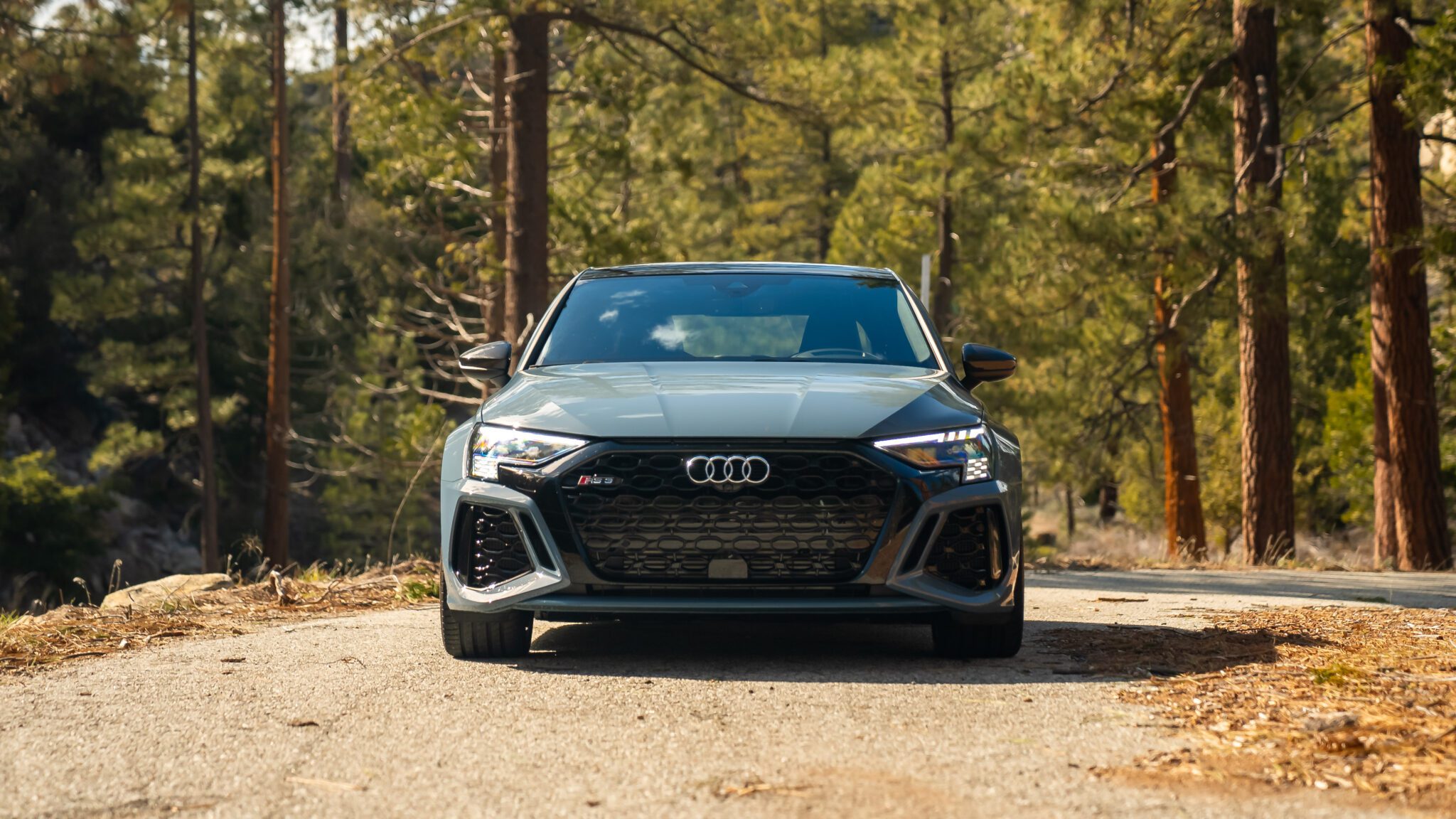
Even as you come up to a bend at full speed, its upsized six-piston brakes with 14.8-inch rotors up front and a 12.2-inch set in the back easily reign in the RS’ added pace. More importantly, they drop 22 pounds of unsprung weight while delivering consistent and dependable performance. Paired with the standard RS sport suspension, the RS 3 not only sits nearly an inch lower than a standard A3 but manages body movements excellently under heavy braking, tight cornering, or off-the-line acceleration.
The result is a car that is not only easy to drive thanks in part to much of its hardware extending its capabilities but one that delivers confidence-inspiring performance. It’s the kind of car you can build up your pace with, as it remains very consistent as you approach its limits.
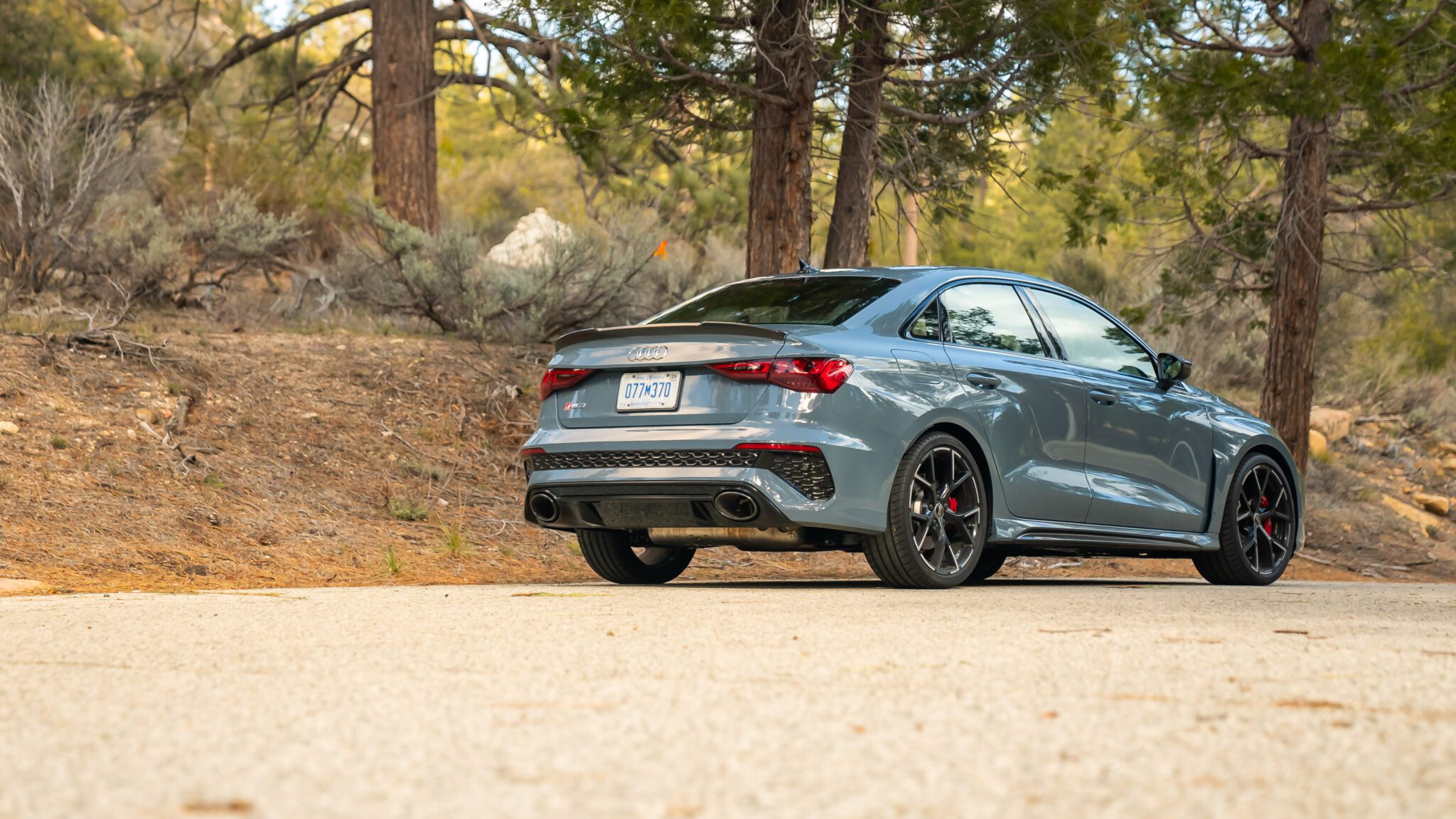
If the Audi RS 3 is so good, why isn’t it a more popular choice amongst enthusiasts? Well, I’ll give you two. Despite handing you a sports car beating performance on demand, it does so without always exciting the senses. Its steering may be sharp, light, and precise, but it’s practically devoid of feedback. This theme continues whether we’re talking about its numbed brakes or overly-isolated cabin. It, paired with a still-too-quiet sports exhaust system, leaves you feeling somewhat disconnected, even while moving at tremendous speeds.
The second is perhaps the most relevant to buyers at this price point, and that’s its cost. For 2024, the Audi RS 3 carries a base figure of $62,795, including a $1,095 destination fee. My tester, including extras such as its $2,750 Carbon Package, $2,500 RS Technology Package, and $1,000 RS Sports exhaust, to name a few, comes in at $70,690. For context, that places it within striking distance of the Cadillac CT4-V Blackwing, the BMW M2, and Mercedes-AMG CLA 45 S.
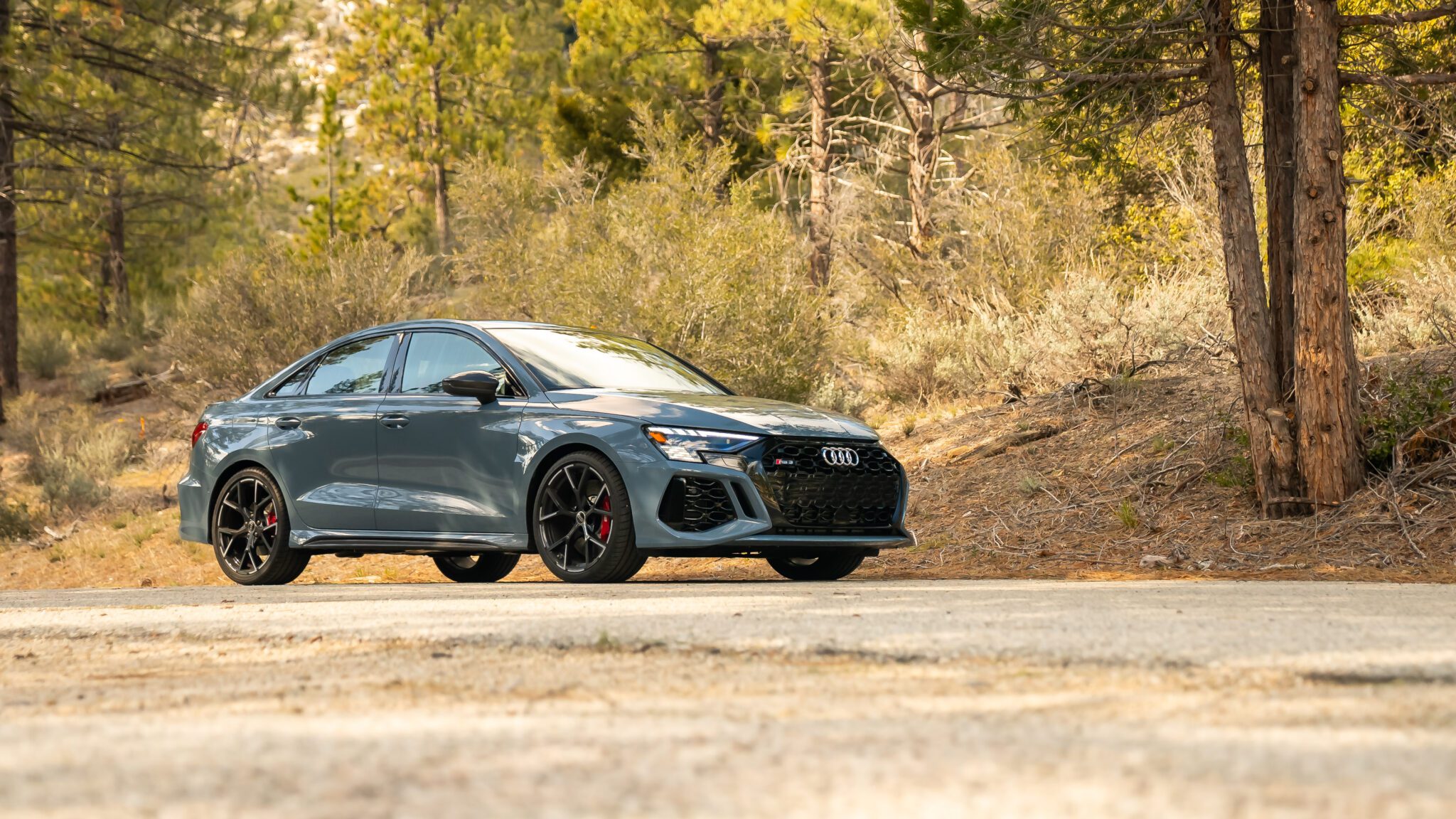
It’s not that the RS 3 is overpriced, especially when you consider that rivals cost the same or more, but it exists in a segment where buyers are inundated with excellent choices. When you factor in that, practically everything it competes with is just as quick, just as tech-filled, and arguably just as good-looking, it’s the driving experience that’ll motivate someone to pay up for one.
Audi has built a tremendous little sedan with the RS 3. It’s fast, easy to drive, and packs a very interesting powertrain. Additionally, it’s filled with tech that allows it to demolish a back road, from its trick differentials, unique quattro system, and quick-shifting dual-clutch. However, despite delivering this tremendous speed, it doesn’t always communicate it to the enthusiast piloting it.
Given Audi’s recent track record of updating its current lineup to pull the best out of a given model, perhaps the RS 3 should be next in line to receive a Competition pack or a Performance model. It certainly has the bones to capitalize on it, and it’s special enough to deserve it.

